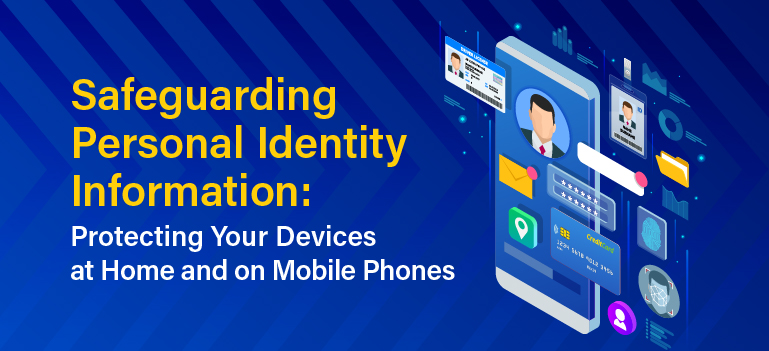Introduction:
In today’s digital age, protecting Personal Identity Information (PII) is more crucial than ever. With an increasing number of cyber threats, it is essential to take proactive measures to safeguard our personal data on devices at home and on mobile phones. This article aims to provide practical tips to help individuals protect their PII effectively.
- Keep Your Devices Secure:
The first line of defense is ensuring the security of your devices. Implement the following measures to safeguard personal information:- Strong Passwords: Create unique and complex passwords for all your devices, including smartphones, tablets, laptops, and home computers. Use a combination of uppercase and lowercase letters, numbers, and special characters. Avoid using easily guessable information like birthdays or names.
- Two-Factor Authentication (2FA): Enable 2FA whenever possible. This adds an extra layer of security by requiring a second form of verification, such as a fingerprint, face recognition, or a unique code sent to your mobile device/or email.
- Regular Software Updates: Keep your devices up to date with the latest software patches and security updates. These updates often include important bug fixes and vulnerability patches that help protect against potential threats.
- Antivirus and Firewall: Install reputable antivirus software and enable firewalls on your devices. These tools can detect and prevent malicious software or unauthorized access attempts by bad hackers who intentionally enter computer networks with malicious intent.
- Secure Your Home Network:
Your home network is the gateway to your personal devices, such as computers, game systems, printers and mobile devices that connect to the internet and each other, and all are linked together by a router. A router typically looks like a small rectangular box with multiple ports, antennas and indicator lights. Strengthen your home network’s security with the following steps:- Change Default Router Passwords: Many routers come with default usernames and passwords, making them susceptible to attacks. Change these credentials to a strong and unique combination.
(Contact your local provider for more information.) - Enable Network Encryption: Use Wi-Fi Protected Access (WPA2) or WPA3 encryption protocols to secure your wireless network. Encryption ensures that data transmitted between devices and the router remains private and inaccessible to unauthorized users. It protects sensitive data from prying eyes by scrambling ordinary text into a form that is impossible to read without the proper encryption key. It prevents unauthorized users from accessing your precious data.
- Disable Remote Management: Disable remote management features on your router to prevent unauthorized access. This reduces the risk of attackers tampering with your network settings.
- Guest Network: Create a separate guest network for visitors. This isolates their devices from your home network and limits potential vulnerabilities.
- Change Default Router Passwords: Many routers come with default usernames and passwords, making them susceptible to attacks. Change these credentials to a strong and unique combination.
- Practice Safe Browsing Habits:
The internet is filled with potential threats. Adopt the following safe browsing practices:- Use Secure Websites: When handling sensitive information, such as banking or online shopping, look for websites with “https://” in the URL. The “s” indicates a secure connection, encrypting data transmitted between your device and the website.
- Be Cautious with Email and Links: Avoid clicking on suspicious email links or opening attachments from unknown senders. Phishing attacks often use deceptive tactics to trick users into divulging personal information or installing malicious software.
- Opt for Two-Step Verification: Enable two-step verification for your online accounts, especially email and social media platforms. This provides an extra layer of security by requiring a unique code or confirmation on your mobile device when logging in.
- Regularly Clear Browser Cache: Clear your browser cache and cookies regularly to remove stored data that can potentially be accessed by malicious actors. (A cache is hardware or software that is used to store something usually data.)
- Protect Your Mobile Phone:
Mobile phones are a treasure trove of personal information. Take these steps to fortify your mobile phone security:- Lock Screen Security: Enable biometric authentication, such as fingerprint or face recognition, along with a strong PIN or password to unlock your device
In conclusion, protecting the PII that you have on your devices at home and on mobile phones in this current cyber environment is of utmost importance in your life today.
For more valuable information on cybersecurity practices, subscribe for FREE today at uscybersecurity.net/subscribe
Karen Austin
Tags: Mobile Devices, Network Security, Personal Identity, PII


